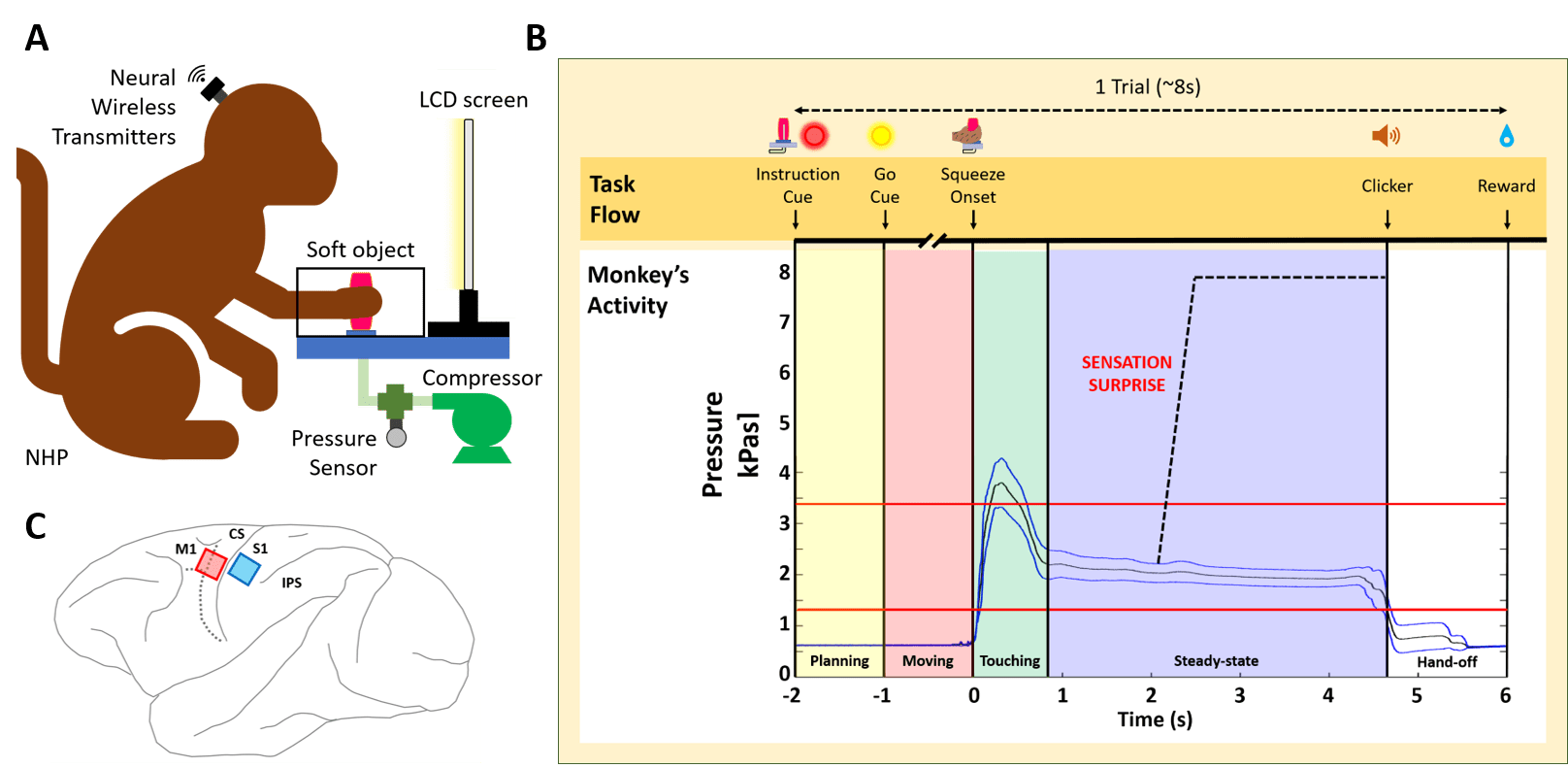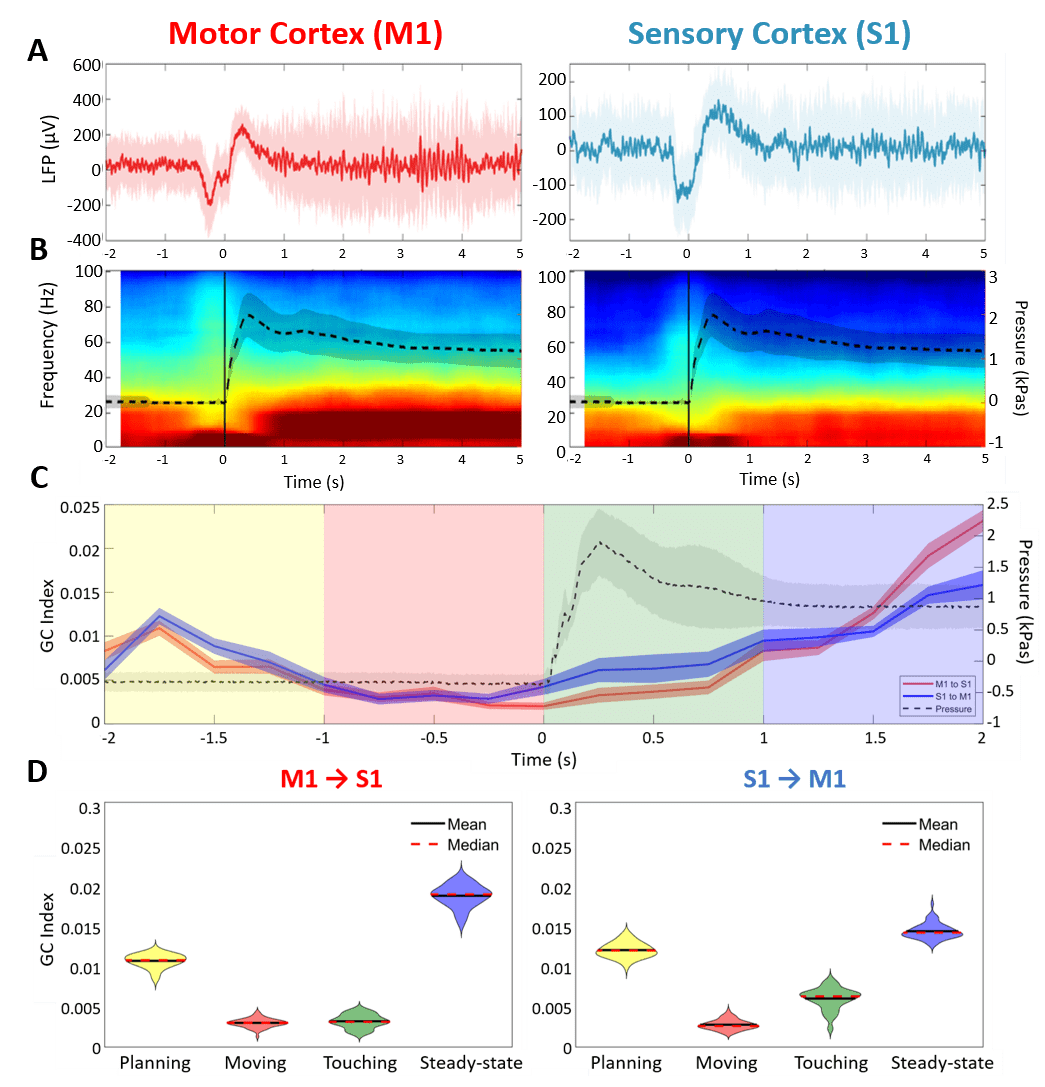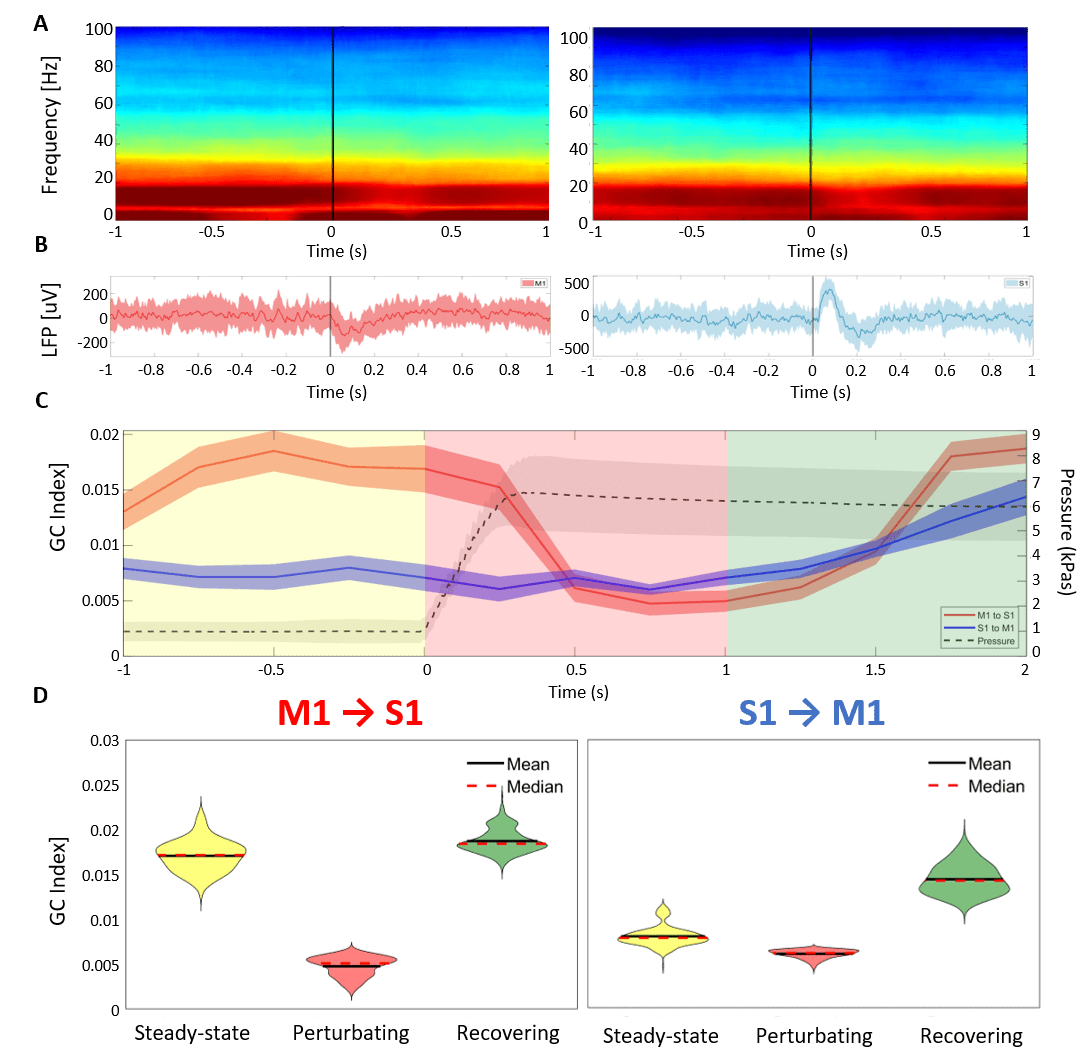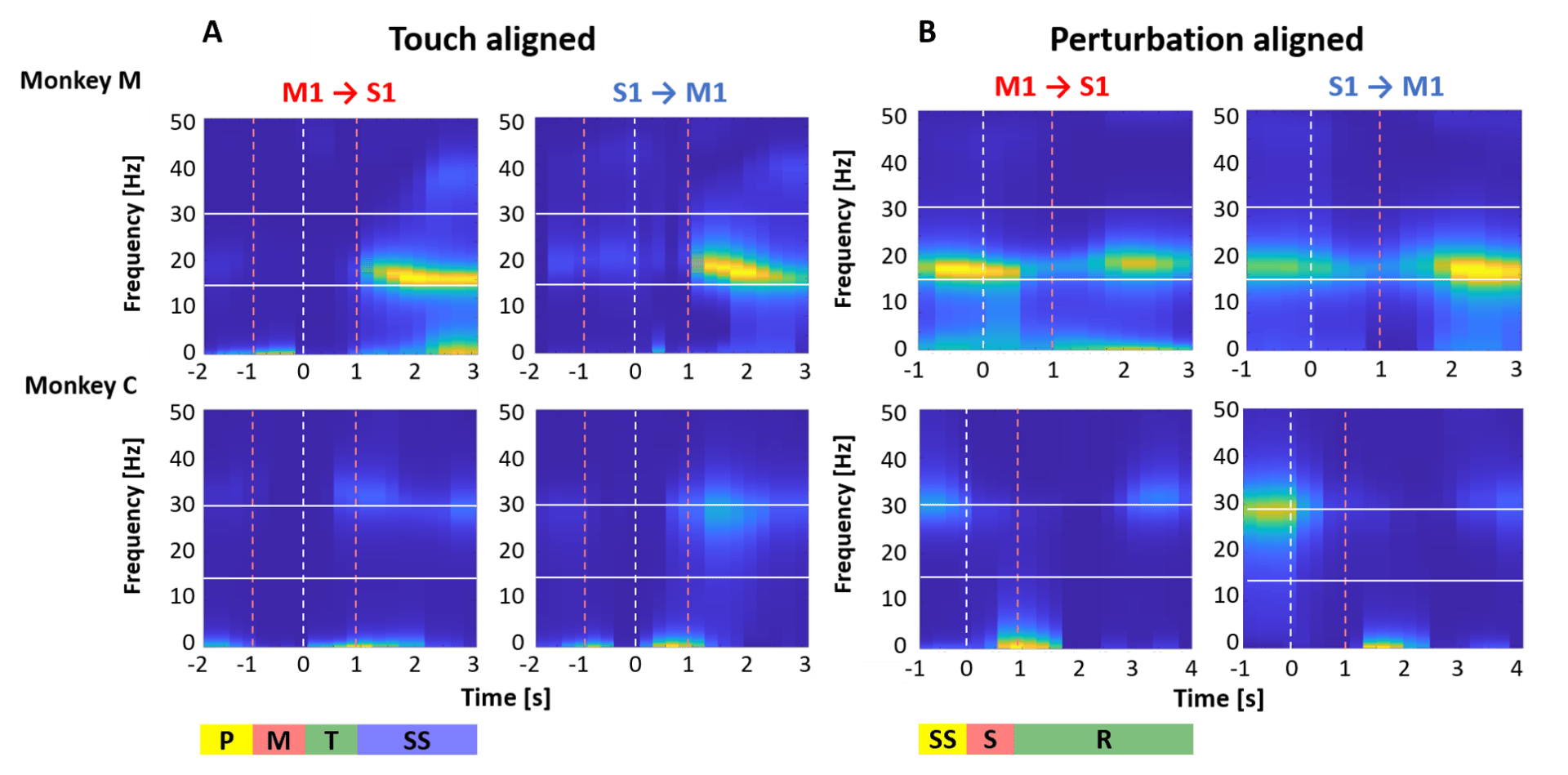Huy Cu, Laurie Lynch, Kevin Huang, David Borton, Wilson Truccolo & Arto V. Nurmikko
Everyday experiences that are essential to intelligent dexterous manipulation for primates involve interaction between tactile sensory inputs and motor outputs in the nervous system. Still, the functional communication between sensory and motor cortical areas is underexplored. We compute the intracortical Granger Causality, which may reveal the functional connectivity, between the hand primary motor (M1) and somatosensory (S1) cortices as monkeys perform the compliant-object squeezing task with tactile surprising. (Fig. 1)

(A) Schematics of behavior apparatus. The rig composed of a compliance object, which is made of soft polymer and is pressurized by an air compressor.
(B) Overview of a trial scheme. Top: Graphical representations of task flow. Bottom: Average pressures from 39 trials. There are 4 important events, which are Planning (Yellow panel), Moving (Red panel), Touching (Green panel) and Steady-state (Blue panel), which occurs along with the task. There are two types of tasks: The Normal task and the Sensation surprising task.
(C) The microelectrode arrays (MEA) implantations in 2 monkeys.
We report that the Granger Causality between M1 and S1 is bidirectional and that communication gradually changes depends on the stage of the task. Comparing to the resting stage, causalities in the steady stage are significantly stronger by numerous pairs of signals and are prominently driven by the M1. During the tactile surprise and recovering stage, we report the role of S1 in providing sensation feedback as the S1-causality increases remarkably the M1-causality becomes less significant. Finally, frequency analyses suggest that Beta (15-30hz) oscillation provides another path of temporal communication between primary motor and sensory cortices. Together, these findings suggest that sensorimotor integration could be relied on and modified through the Granger causality and Beta band dynamics.
Granger Causalities show bi-directional communication between 2 areas

(A) Trial-averaged LFP of 1 channel of S1 and M1 arrays
(B) The average spectrogram versus pressure profile with touching aligned. The black vertical line represents the touching onset.
(C) Granger causality on Time-domain using sliding window (length = 1s, step = 200ms) on both directions from M1 to S1 (MSc, Red trace) and S1 to M1 (SMc, Blue trace) versus the pressure profile (Black trace). The background color represents stages.
(D) The distribution of GC from the pool of 56 selected pairs on different stages: Planning, Moving, Touching, and Steady-state.
Abrupt and Randomly Timed Change in Compliance Modulates Somatosensory Circuits and Affects Bidirectional S1-M1 Communication

Abrupt compliance change affects field potentials in the frequency domain

